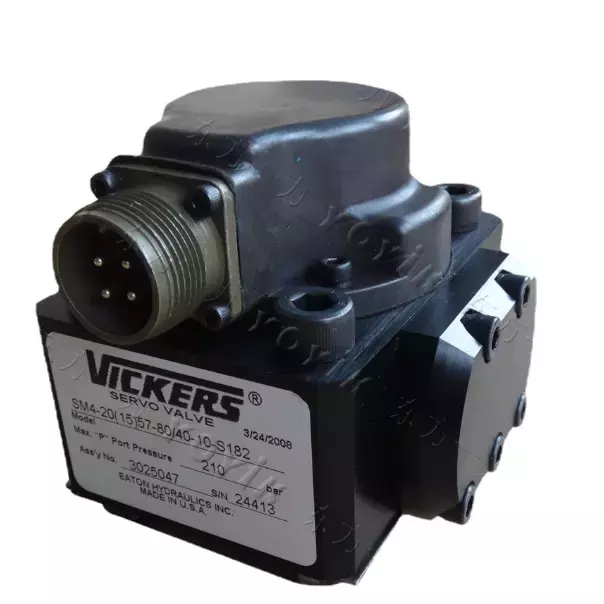language
English
العربية
বাংলাদেশ
Български
Hrvatski
Česky
Dansk
Nederland
 Esperanto
Esperanto
Slovenski
Filipino
Suomi
Français
Maori
 Shqiptare
Shqiptare
Georgian
 Euskara
Euskara
Deutsch
Ελλάδα
ישראל
इंडिया
Magyarország
Ísland
Indonesia
Irlanda
Italia
日本語
Sovensko
Հայաստան
한국
Kyrgyz
ປະເທດລາວ
 Zulu
Zulu
Latvian
Lithuanian
Luxembourgish
 Latinus
Latinus
Macedonian
Малайская
Maltese
Монгол улс
 Cymraeg
Cymraeg
ဗမာ
 தமிழ்
தமிழ்
नेपाल
Norge
ایران
Polska
Portugal
România
Российская
Србија
 Slovak
Slovak
Србија
 Slovak
Slovak
Bosanski
Slovenian
Беларус
España
Sverige
Точик
ประเทศไทย
Türk
Azərbaycan
Uzbek
 Afrikaans
Afrikaans
Việt Nam

NEWS
Has Now Developed Into An International Trading Company That Supplies Various Hydraulic Machinery Parts, Oil Pumps And Valves.
Understanding the SM4-10 Solenoid Valve: Essential Insights for Automotive Applications
Release Time:
2021-09-15
The SM4-10 solenoid valve is a critical component in various automotive systems, particularly in the realm of control mechanisms for fluid and air. This type of valve operates using electromagnetic principles, which allows for efficient regulation of fluid flow within a system. Understanding the features and operational mechanisms of the SM4-10 can significantly benefit automotive professionals an
The SM4-10 solenoid valve is a critical component in various automotive systems, particularly in the realm of control mechanisms for fluid and air. This type of valve operates using electromagnetic principles, which allows for efficient regulation of fluid flow within a system. Understanding the features and operational mechanisms of the SM4-10 can significantly benefit automotive professionals and enthusiasts alike.
One of the primary functions of the SM4-10 solenoid valve is to facilitate the automation of processes within the vehicle’s electronic systems. When an electrical current is applied to the solenoid, it generates a magnetic field that moves a plunger within the valve. This movement opens or closes the valve, allowing or restricting the flow of fluids or gases accordingly. This on/off functionality is crucial for various applications, such as controlling fuel delivery, managing HVAC systems, and engaging various pneumatic devices.
In terms of applications, the SM4-10 solenoid valve is commonly found in fuel systems, where it plays a pivotal role in managing the fuel supply to the engine. By ensuring precise control over fuel flow, the valve contributes to improved engine efficiency and performance. Additionally, it is employed in transmission systems, where it aids in shifting gears with smoothness and precision, thereby enhancing the driving experience.
When selecting an SM4-10 solenoid valve for a particular application, several factors should be considered. These include the valve's compatibility with the specific fluid type, operating pressure, and voltage requirements. Proper selection ensures optimal performance and longevity of the component in the automotive environment. Additionally, regular maintenance and periodic inspections can help in identifying wear and tear, ensuring that the solenoid valve operates efficiently throughout its lifespan.
Furthermore, understanding the electrical specifications of the SM4-10 solenoid valve is essential for automotive professionals. This includes knowledge of its resistance, rated voltage, and current draw during operation. Ensuring that these electrical parameters align with the vehicle’s systems is crucial for preventing malfunction and ensuring seamless integration.
In summary, the SM4-10 solenoid valve is a vital electronic component in modern automotive systems, enabling automated control of fluid flow and contributing to overall vehicle efficiency. By understanding its functionality, applications, and selection criteria, automotive professionals can leverage this knowledge to enhance vehicle performance and reliability. Whether for maintenance purposes or system upgrades, the SM4-10 solenoid valve represents a key aspect of automotive electronic engineering.
One of the primary functions of the SM4-10 solenoid valve is to facilitate the automation of processes within the vehicle’s electronic systems. When an electrical current is applied to the solenoid, it generates a magnetic field that moves a plunger within the valve. This movement opens or closes the valve, allowing or restricting the flow of fluids or gases accordingly. This on/off functionality is crucial for various applications, such as controlling fuel delivery, managing HVAC systems, and engaging various pneumatic devices.
In terms of applications, the SM4-10 solenoid valve is commonly found in fuel systems, where it plays a pivotal role in managing the fuel supply to the engine. By ensuring precise control over fuel flow, the valve contributes to improved engine efficiency and performance. Additionally, it is employed in transmission systems, where it aids in shifting gears with smoothness and precision, thereby enhancing the driving experience.
When selecting an SM4-10 solenoid valve for a particular application, several factors should be considered. These include the valve's compatibility with the specific fluid type, operating pressure, and voltage requirements. Proper selection ensures optimal performance and longevity of the component in the automotive environment. Additionally, regular maintenance and periodic inspections can help in identifying wear and tear, ensuring that the solenoid valve operates efficiently throughout its lifespan.
Furthermore, understanding the electrical specifications of the SM4-10 solenoid valve is essential for automotive professionals. This includes knowledge of its resistance, rated voltage, and current draw during operation. Ensuring that these electrical parameters align with the vehicle’s systems is crucial for preventing malfunction and ensuring seamless integration.
In summary, the SM4-10 solenoid valve is a vital electronic component in modern automotive systems, enabling automated control of fluid flow and contributing to overall vehicle efficiency. By understanding its functionality, applications, and selection criteria, automotive professionals can leverage this knowledge to enhance vehicle performance and reliability. Whether for maintenance purposes or system upgrades, the SM4-10 solenoid valve represents a key aspect of automotive electronic engineering.
Related News
undefined
Contact Us
Quanzhou Nuoyi Hydraulic Technology Co., Ltd.
Hotline:+86-18876238072
Add: Room 1915, Building 1, No. 2205, Jiangbin South Road, Licheng Dist., Quanzhou, Fujian, China
Email: vanepump@fjzhenyuan.com

